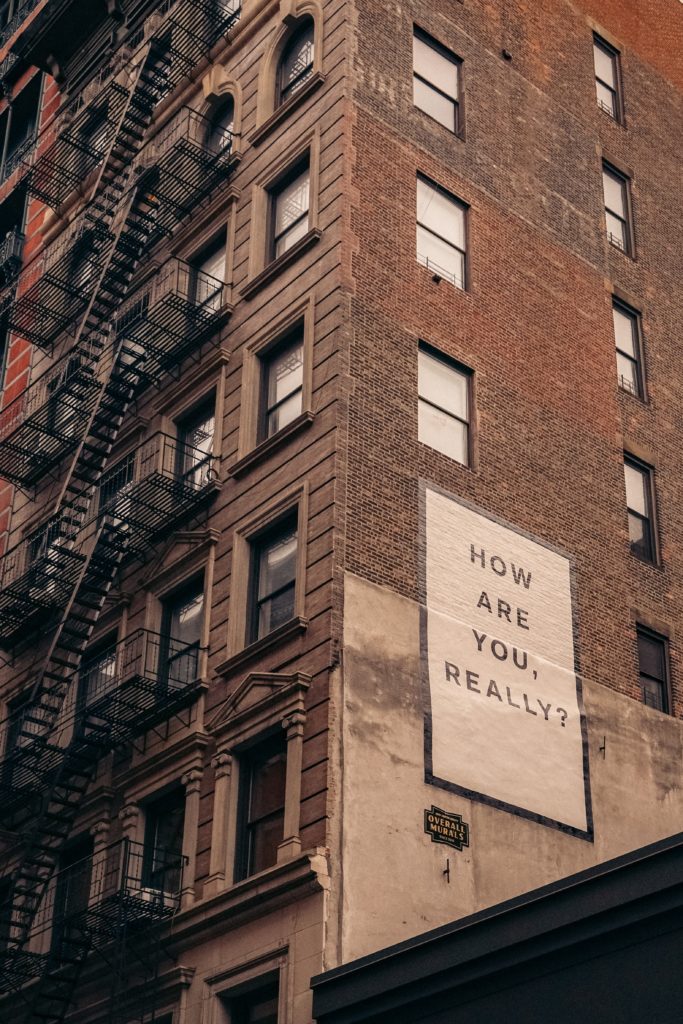You know what it feels like.
You come home after a long day at work. The kids are running around screaming, the dog left some surprise messes for you to clean up, and the thought of trying to cook a healthy meal and clean up the kitchen seems like a herculean task.
You feel tired, stressed, worried, overwhelmed. The list goes on and on.
Instead of facing your life, there is another option, and it is very enticing

All you have to do is run to your room, whip out your computer, sign into Netflix, and immediately you can forget all the things going on. Maybe even more importantly, you can begin to avoid all those feelings listed above.
IT’S JUST HUMAN NATURE
We humans sure hate feeling bad and will do almost anything to avoid it. This is known as emotional avoidance, or “buffering,” as I like to call it.
Buffering is when you drink away feelings, sex away feelings, eat away feelings, and more recently in our human history, you can now use social media, streaming services, and video games to distract from all those things you just hate to feel!
There is nothing wrong with drinking, sex, food, or media consumption when used appropriately. Don’t get me wrong, I love a good “Netflix and chill” as much as the next person. But there are two things to be aware of when you’re buffering your feelings.
TWO REASONS TO STOP BUFFERING
The first is that excessive buffering leads to less emotional resilience. Buffering doesn’t actually help you process or deal with emotions and can make them fester and grow bigger.
The more you buffer, the more your ability to deal with uncomfortable emotions decreases over time, making even small emotions seem too big to handle, according to this study published by the US National Library of Medicine and the National Institutes of Health.
See the issue?

Avoid a feeling, the feeling grows, your desire to hide grows, and you lose all ability to deal with any uncomfortable feelings.
Yikes! Not a recipe for a happy, healthy you — especially since uncomfortable feelings are unavoidable.
You can learn more about this at the website for the US Department of Veteran Affairs, which specifically explains how this looks for people with PTSD.
The second real issue with excessive buffering is that it hinders growth. Uncomfortable feelings often accompany times of growth, and growth allows you to experience the world and achieve your wildest dreams!
If you don’t learn how to experience uncomfortable feelings, you are most likely limiting yourself by trying to only experience pleasurable feelings.
Along those same lines, are you really even feeling pleasure in your life if you are hiding from reality?
I mean, how sexy is it to hide in a dark room, with a carton of ice-cream and hope that your kids and job will disappear?
That is why your buffer of choice is a false pleasure. If you aren’t able to experience all of the feelings associated with life, then even the pleasurable ones lose their vibrancy.

In other words, in order to feel good, you have got to get good at feeling bad.
HOW TO GET BETTER AT FEELING BAD
“So now what?” you might be asking. “What am I supposed to do when I feel horrible?”
As a mindfulness coach, I recommend that you learn some simple (but not always easy!) steps to process your feelings healthily.
- Empathize- Always start your journey with empathy for yourself, recognizing that buffering behavior does not make you bad or lazy, and it doesn’t mean anything about your abilities, your chances for success, or anything else really. It simply means that you are human…welcome to the club friend!
- Discover- Next, you need to recognize the feelings you buffer. This can be trickier than it sounds because most of us are so good at hiding from feelings that we jump into buffering without even realizing what we feel. Taking some time to journal is a great starting point.
- Feel- Once you have discovered the feelings you buffer, it is crucial to learn how to process them so you don’t have to hide from them anymore. This requires feeling them, which can be very difficult when you first start doing it.
- Inquire- The last step, after feeling the feeling, is to put it up to inquiry. All of your feelings are caused by thoughts, and many of your thoughts are distorted. If you can question them thoroughly, you might be able to disprove them and feel something else entirely.
Life is full of uncomfortable feelings, and the better you get at processing the uncomfortable, the more alive you’ll feel and the more pleasure you will experience. This is one of the main benefits of practicing mindfulness. For more on that topic, check out this article:
TRY NOT BUFFERING NEXT TIME
So the next time you come home and you feel tired, stressed, worried, overwhelmed, take some time to feel the feeling. Process it, inquire after it, and give yourself a little extra love and empathy.
Afterward, you may still choose to grab your computer and watch Netflix, but you will probably enjoy it a little more knowing that you aren’t hiding anymore and that there are no feelings too big for you to handle when you finish your show and head back into real life.
